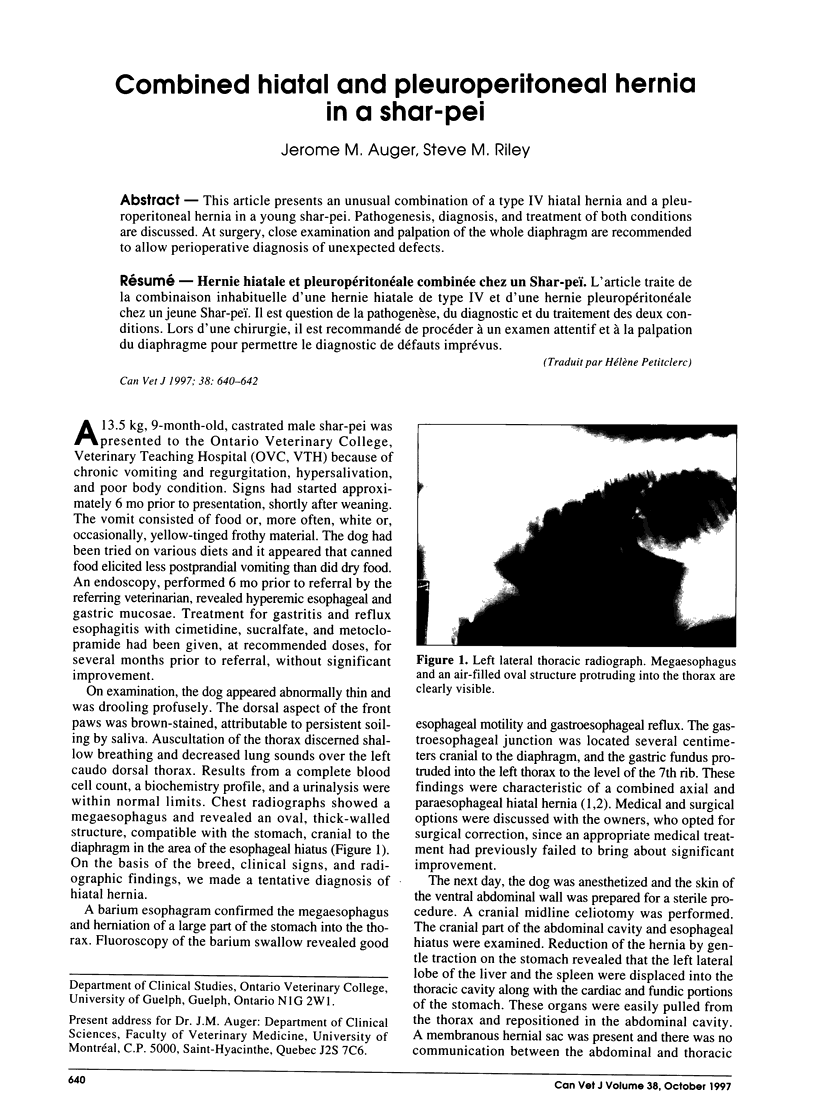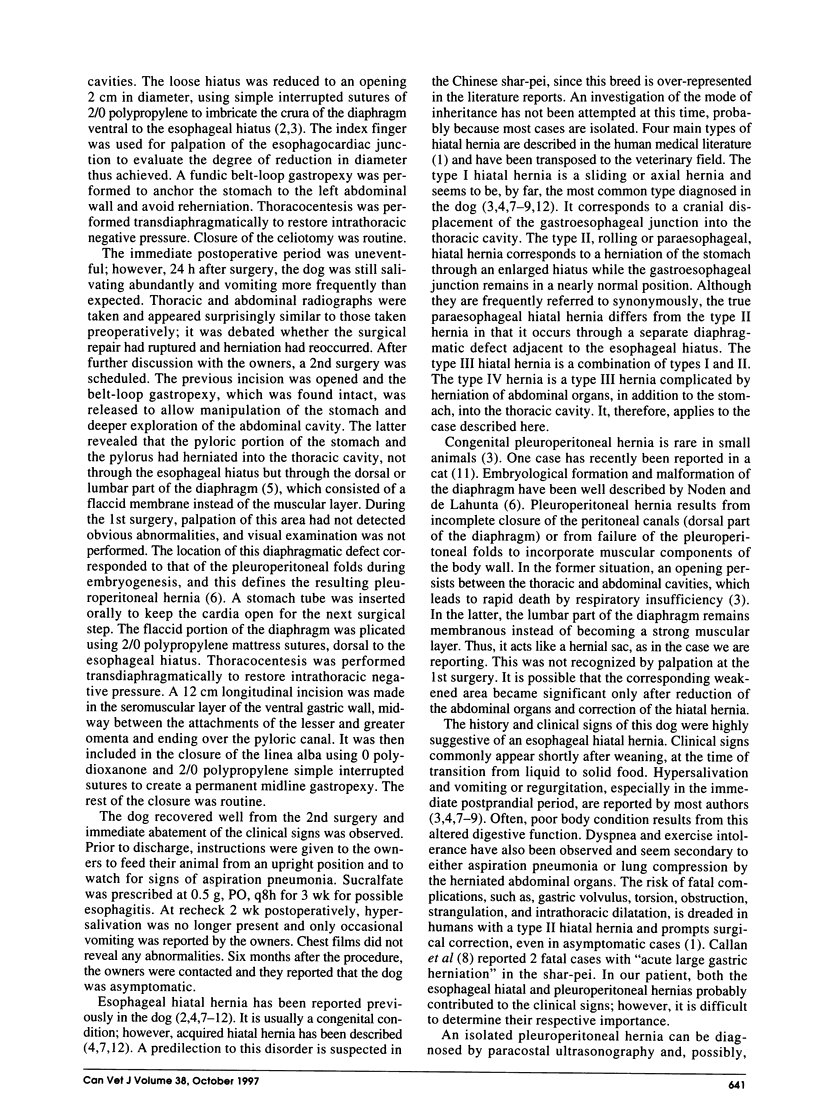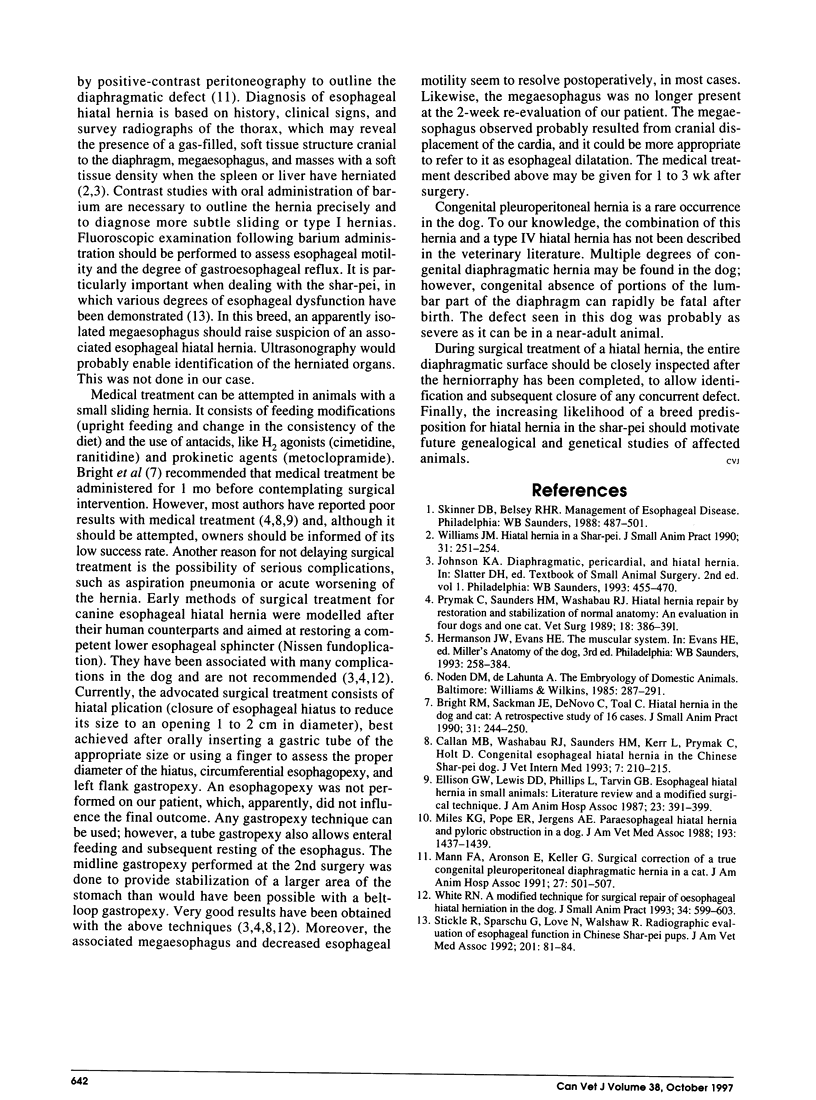Abstract
This article presents an unusual combination of a type IV hiatal hernia and a pleuroperitoneal hernia in a young shar-pei. Pathogenesis, diagnosis, and treatment of both conditions are discussed. At surgery, close examination and palpation of the whole diaphragm are recommended to allow perioperative diagnosis of unexpected defects.
Full text
PDF


Images in this article
Selected References
These references are in PubMed. This may not be the complete list of references from this article.
- Callan M. B., Washabau R. J., Saunders H. M., Kerr L., Prymak C., Holt D. Congenital esophageal hiatal hernia in the Chinese shar-pei dog. J Vet Intern Med. 1993 Jul-Aug;7(4):210–215. doi: 10.1111/j.1939-1676.1993.tb01009.x. [DOI] [PubMed] [Google Scholar]
- Miles K. G., Pope E. R., Jergens A. E. Paraesophageal hiatal hernia and pyloric obstruction in a dog. J Am Vet Med Assoc. 1988 Dec 1;193(11):1437–1439. [PubMed] [Google Scholar]
- Prymak C., Saunders H. M., Washabau R. J. Hiatal hernia repair by restoration and stabilization of normal anatomy. An evaluation in four dogs and one cat. Vet Surg. 1989 Sep-Oct;18(5):386–391. doi: 10.1111/j.1532-950x.1989.tb01106.x. [DOI] [PubMed] [Google Scholar]
- Stickle R., Sparschu G., Love N., Walshaw R. Radiographic evaluation of esophageal function in Chinese Shar Pei pups. J Am Vet Med Assoc. 1992 Jul 1;201(1):81–84. [PubMed] [Google Scholar]



